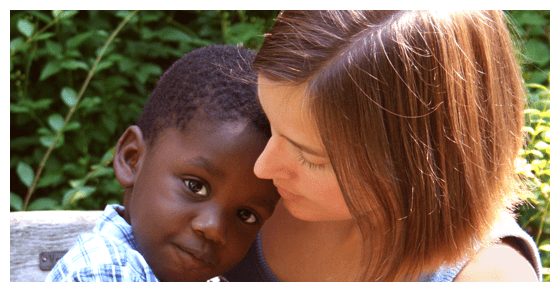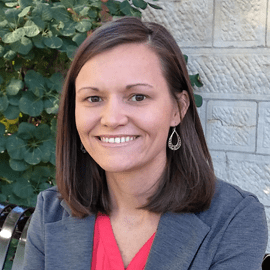
Who Am I? Adopted Individuals’ Identity Is Based in Adoptive and Birth Family Relationships
We all have a built-in need to know who we are. Our identity helps us know what about us is consistent and unique from other people. Everyone develops an identity (most of this work happens in adolescence), but this process can be more difficult for adoptees. Through their communication with their adoptive and birth families, adoptees develop an adoptive identity, or an understanding of what is means to be an adopted person. An adoptive identity helps individuals answer questions such as: Where did I come from? Who were my birthparents and what were the reasons they placed me with my adoptive parents? Do I have biological siblings? What parts of me are like my birth family? Who would I have been if I weren’t adopted?
The process of answering these questions and forming an adoptive identity takes some effort, and it can be challenging for some adoptees. Many individuals feel a sense of loss over a birth parent they have not met, which can lead to grief and confusion. They also may experience uncertainty about issues such as what being adopted means for their identity, what their birth parents are like, and how their adoptive parents feel about their adoption. Adopted individuals also may experience differences from their adoptive family—including, but not limited to, differing ethnic and cultural orientations, personalities, appearances, and physical abilities. The identity tasks with the self and the family can be made worse by negative attitudes about adoption in society.
Even though adoptive identity work can be difficult, adoptees are not alone in this journey. Adoptive and birth parents are important elements of adoptive identity. Communicating with family members is the primary way that individuals understand what their adoption means for their life and their future. We were interested in how adoptees communicated with adoptive and birth families about their adoption and how that helped them better understand their adoption.
To answer our questions about communication and adoptive identity, we conducted seven focus groups, each consisting of three to seven adoptees. Twenty-five adopted adults (five men and 20 women) between the ages of 18 and 62 (average age of 35), talked to us in groups about their experience as an adopted individual. During the focus groups, we talked to participants about their experiences as an adopted individual, their feelings about being adopted, and how they talked to their adoptive and birth parents about their adoption.
Overwhelmingly, adoptees in our study expressed that their relationships with their adoptive family members played a large role in making them who they are. In particular, many participants reported that communicating with their adoptive parents was a significant source of their identity, and a couple even felt their sense of self was shaped entirely by their parents. Reflecting on how her life would be different if her parents had not been home the day the adoption agency called, a woman said, “It’s staggering to think that I might be completely different than I am. My entire identity…is formed by my adoptive parents.” Adoptees said their adoptive parents were the source of their values, humor, and success in life.
Not all adoptees, however, felt completely identified with their adoptive families. Some adoptees felt there were large gaps between who they were and how they talked with their adoptive family. For example, one woman often felt out of place in her adoptive family, explaining, “They were just acting so differently, and I just felt… ‘Jeepers, I really don’t fit in with these people.’” For individuals who didn’t feel as connected with their adoptive family, often smaller differences took on greater meaning. One woman explained, “Any time I was different from my family that I was like, ‘That’s probably because I’m adopted,’ I chalked up that every difference to…to, uh, adoption… [cries briefly] I’m sorry.” These feelings of difference, even over seemingly small differences, caused a lot of sadness.
Some individuals felt communication with their birth families helped explain aspects of their adoptive identity. Individuals talked about looking, acting, or sounding exactly like birth relatives despite having been raised by another family. This provided a lot of comfort for these individuals by explaining why adoptees were a certain way. Adoptees experienced closure after learning this information, or, as one woman said, “I would come away with that sense of feeling explanation—things that were question marks now were periods. I get that now.”
Even though communication with the birth family helped individuals understand themselves better, some adoptees still experienced some tension after reuniting with their birth family. Finding out negative information about their birth families, such as drug abuse, child abuse, abandonment, and incarceration were hard to digest. One young person explained her birth mother was pushy and asked for money. She was emotionally upset as she described how hard it was to know that the woman was her genetic mother. Individuals had to make sense of the role of their adoption in their life even in the face of these difficult interactions with birth parents.
Perhaps the most important finding of the study was the way in which the adoptive and birth families interact. Some individuals felt as though it was hard to be part of two families at the same time. One woman asked, “What do you say to your mother when your mother’s standing beside you? You know, long time no see?” Although she was glad to meet her biological mother, it was hard because she had a good relationship with her adoptive mother and didn’t need her birth mother to fill a mothering role. Individuals felt conflicted about prioritizing the adoptive family over the birth family. One woman explained, “I wasn’t going to forfeit holidays or anything like that. Um, I would go there when I could, but they weren’t involved in [my] wedding.” These individuals had a hard time managing these two family relationships.
The few individuals who were the most positive about their adoption were the ones who felt as though their birth and adoptive families worked together to help them understand their adoption. One woman talked about meeting her birth father and having her adoptive father along for support, saying, “They were…sharing stories about each other, and my dad was telling my birth father about me as a child, and like kind of doing the, the dad thing.” Having the adoptive parents’ support allowed individuals to draw meaning from their birth parents about who they are as a person while maintaining a firm connection to their adoptive parents. In the end, adoptive and birth parents working together for the child provide the most secure route to identity for adopted individuals.
An important takeaway from this study is that wanting to know the birth parents is not a reflection of how good the adoptive family is. It is a normal part of adoptee experience to want to know one’s origins. Support from adoptive parents and society in maintaining positive, balanced birth family relationships has the potential to improve adoptee well-being and understanding of one’s adoption.


